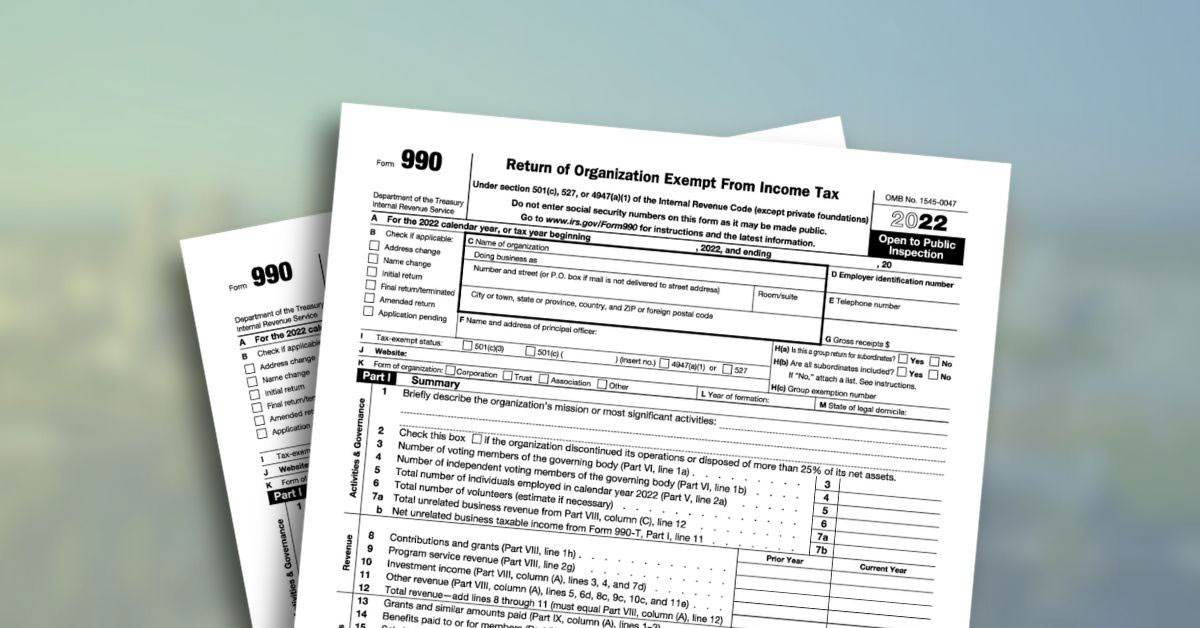Tax Brief: Form 990, Schedule I Grants and Other Assistance

The IRS Form 990’s Schedule I is designed to provide information about a not-for-profit organization’s giving of grants and other assistance to domestic individuals, governments, and organizations. This includes cash grant awards, non-cash assistance, scholarships, stipends, and other similar payments. Assistance provided to foreign organization or individuals should not be included on Schedule I, but instead reported separately on Schedule F. This article will explore the relevant reporting requirements for each section of Schedule I and the related information that must be tracked in order to be reported.
Part I – General Information
The first part of the schedule is designed to gather information about how the not-for-profit organization keeps records to substantiate assistance provided, what selection criteria are used in deciding who receives assistance, and procedures for monitoring the use of the assistance. This part of the schedule gives users of the Form 990 an idea of how thoughtful the not-for-profit organization has been in designing sound policies and procedures with respect to providing grants and other assistance. Ideally, the responses to this part should communicate that the organization has policies and procedures in place for selecting recipients, maintaining records of the transactions, and ensuring the assistance is used as intended. Part IV of the schedule is used to describe the organization’s procedures for monitoring the use of grant funds and other assistance in a narrative format.
Part II – Grants and Other Assistance to Domestic Organizations and Domestic Governments
When a not-for-profit organization provides grants or other assistance greater than $5,000 to any single domestic organization or government, the transaction must be reported in Part II of Schedule I. Information required to be reported for each recipient includes their name, address, EIN, and IRC section (if applicable). Additionally, the amounts of assistance provided (cash or non-cash), method of valuation, and purpose of the grant or assistance must be detailed for each recipient over the $5,000 threshold. Grants and other assistance that are less than $5,000 can be entered as one aggregate line item. The total grants and assistance reported in Part II flows to the Form 990, Part IX Statement of Functional Expenses, line 1.
Part III – Grants and Other Assistance to Domestic Individuals.
Part III is required to be completed when an organization provides grants or assistance greater than $5,000 in aggregate to domestic individuals. Unlike Part II, assistance provided to individuals in Part III is reported in a summarized fashion based on the type of grant or assistance provided. For example, if an organization provided scholarships to 50 individuals in the amount of $200 each, the sum of $10,000 in scholarships would be reported on a single line in Part III. Information required to be reported for each assistance type includes the number of recipients, amounts of assistance provided (cash or non-cash), and method of valuation. Remember, the reporting requirement is triggered whenever assistance to individuals is greater than $5,000 in aggregate, not per individual. The total grants and assistance reported in Part III also flows to the Form 990, Part IX Statement of Functional Expenses, line 1.
Part IV – Supplemental Information
At a minimum, Part IV must describe the organization’s procedures for monitoring the use of grant funds in the United States. However, this section can also be used to provide any additional information that may be useful to the users of the Form 990 regarding grants and other assistance provided.
The purpose of this article is to summarize the key components and reporting requirements of Schedule I and is not intended to be all-encompassing or serve as replacement for the Form’s instructions.
This article is meant to be a resource and provide tools to assist your organization. Please consult your tax advisor regarding your specific tax situation.